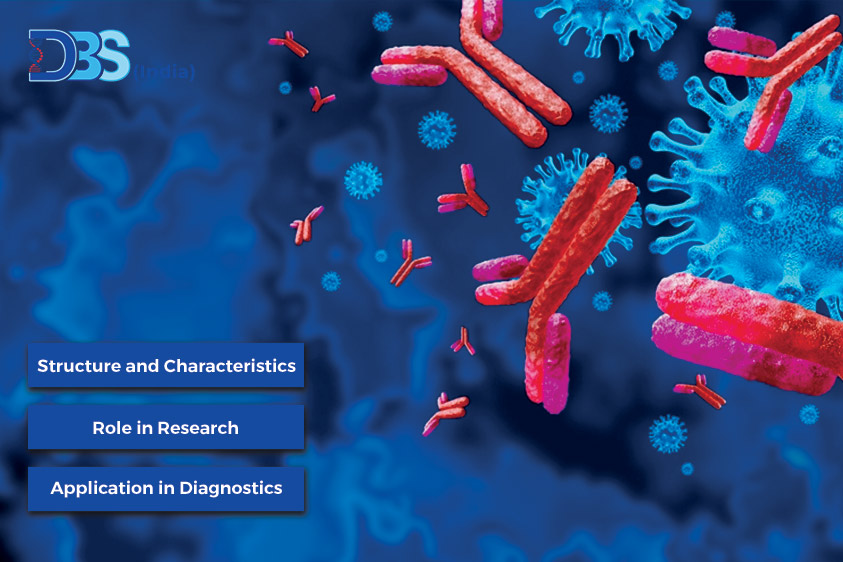What is the Difference Between Primary and Secondary Antibodies?
Discover the key distinctions between primary and secondary antibodies in this informative article. Uncover the role of each type in research and diagnostics, plus answers to common questions.
Introduction
In the realm of immunology and molecular biology, antibodies play a pivotal role. They are essential tools for scientists, researchers, and medical professionals alike. Among these antibodies, primary and Secondary antibodies company in india are two distinct categories, each with its unique functions and applications. In this comprehensive article, we will delve into the fundamental differences between primary and secondary antibodies, shedding light on their roles, characteristics, and practical uses.
Primary Use of Antibodies
Antibodies, also known as immunoglobulins, are proteins produced by the immune system to identify and neutralize foreign substances, such as bacteria and viruses. Primary antibodies are the initial antibodies generated by an organism in response to an antigen, the foreign invader.
Structure and Characteristics
Primary antibodies are typically large Y-shaped molecules consisting of two heavy and two light chains. These antibodies have a high affinity for a specific antigen, allowing them to bind to it with precision.
Role in Research
Primary antibodies providers in india are invaluable tools in research. They are used to detect and target specific proteins or antigens of interest in various laboratory techniques, such as Western blotting, immunohistochemistry, and flow cytometry. Researchers use primary antibodies to identify the presence or absence of a specific molecule within a sample.
Application in Diagnostics
In diagnostic medicine, primary antibodies are used in assays to detect specific markers of diseases. For example, a primary antibody may be employed in an enzyme-linked immunosorbent assay (ELISA) to diagnose conditions like HIV or COVID-19 by detecting viral antigens.
Secondary Antibodies: A Supportive Role

Secondary antibodies, on the other hand, do not directly interact with the target antigen. Instead, they assist in the detection and amplification of primary antibodies.
Structure and Characteristics
Secondary antibodies are typically smaller and simpler in structure compared to primary antibodies. They lack antigen-binding specificity on their own.
Role in Research
Secondary antibodies serve as a bridge between primary antibodies and detection systems. They are labeled with markers like enzymes or fluorescent dyes. When secondary antibodies bind to primary antibodies, they facilitate the visualization or quantification of the target antigen.
Application in Diagnostics
Secondary antibodies are indispensable in various laboratory techniques, including immunofluorescence and immunoprecipitation. In diagnostic assays, they enhance the sensitivity and specificity of tests, making them more reliable and accurate.
Frequently Asked Questions
What is the difference between primary and secondary antibodies?
The key difference lies in their roles. Primary antibodies directly bind to the target antigen, while secondary antibodies support primary antibodies by amplifying signals or aiding in visualization.
How are primary antibodies produced?
Primary antibodies are naturally produced by an organism's immune system in response to an antigenic challenge.
Can secondary antibodies be used alone in experiments?
No, secondary antibodies lack specificity for the target antigen. They need primary antibodies to guide them to the specific antigen of interest.
Are primary antibodies larger than secondary antibodies?
Yes, primary antibodies are typically larger and more complex in structure than secondary antibodies.
What are some common applications of primary antibodies in research?
Primary antibodies are used in techniques like Western blotting, immunohistochemistry, and flow cytometry to detect and quantify specific proteins or antigens.
Can secondary antibodies be labeled with different markers?
Yes, secondary antibodies can be labeled with various markers, including enzymes and fluorescent dyes, depending on the experimental requirements.
Conclusion
In the world of immunology and molecular biology, understanding the difference between primary and secondary antibodies is crucial for successful research and diagnostics. Primary antibodies are the direct warriors, binding specifically to target antigens, while secondary antibodies are the trusty allies, aiding in detection and amplification. By mastering their roles, scientists can unlock the full potential of these essential tools and advance their research and diagnostic capabilities.



Comments
Post a Comment